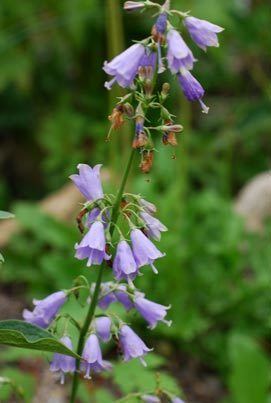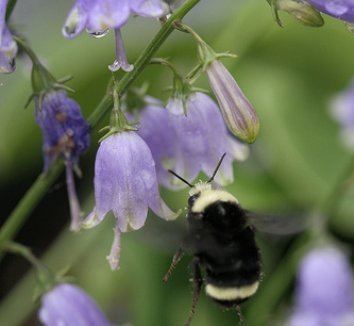Rank Species | Higher classification Adenophora | |
 | ||
Similar Adenophora, Adenophora triphylla var japon, Campanulaceae, Codonopsis lanceolata, Platycodon | ||
Adenophora triphylla var japonica
Adenophora triphylla (also known as Japanese lady bell) is one of the 62 species of Adenophora. It is a flowering plant in the Campanulaceae family that is distributed mainly over the Korean Peninsula, Japan, and China.
Contents
- Adenophora triphylla var japonica
- Diy metallic plants adenophora triphylla
- Ecology
- Cultivation details
- Propagation
- Chemical constituents
- Traditional medicine
- References

Diy metallic plants adenophora triphylla
Ecology

Adenophora triphylla is an erect, perennial herb growing to 100 centimetres (39 in) in height. It has a white and thickened taproot, shaped like a carrot, 7-16 × 1.5-1.8 cm in diameter. Stems are white pilose with alternately arranged leaves. It has oval, almost round, serrated leaves growing to 10 centimetres (3.9 in) that are white, sharply pointed, and pilose. A. triphylla flowers are about 13 millimetres (0.51 in)-22 millimetres (0.87 in) long and have both male and female organs (hermaphrodite), each having 5 stamens and a pistil (the long head of the pistil overhangs the flower). Flowers are pollinated by insects. Seeds are yellow-brown colored and oblong slightly compressed, 1 millimetre (0.039 in)-1.5 millimetres (0.059 in).

Cultivation details
Adenophora triphylla grows well in a warm and sunny or slightly shaded niche, but cannot grow in full shade; A. triphylla needs alkaline soil that is slightly moisturized, or peaty soil. Plants are hardy to about −20 °C (−4 °F). Slugs have been known to destroy its young growth or even mature plants.
Propagation
Adenophora triphylla grows wild in mountains and meadows, but is also cultivated. The seed can be sown in spring and germinates in 1–3 months. At that time, it needs a temperature of about 10 °C (50 °F). It can be planted out into a permanent positions while young.
Chemical constituents
Adenophora triphylla roots contain chemical compounds that are saponins and triterpenes.
Traditional medicine
In Korea, A. triphylla is traditionally used for sputum, cough and bronchial catarrh. It is believed to have antifungal, expectorant, and cardiotonic effects.
